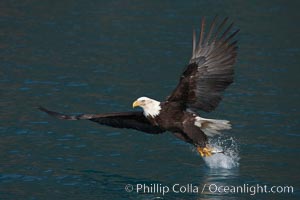
Bald eagle makes a splash while in flight as it takes a fish out of the water.
Species: Bald eagle, Haliaeetus leucocephalus, Haliaeetus leucocephalus washingtoniensis
Location: Kenai Peninsula, Alaska
Image ID: 22584
Species: Bald eagle, Haliaeetus leucocephalus, Haliaeetus leucocephalus washingtoniensis
Location: Kenai Peninsula, Alaska
Image ID: 22584
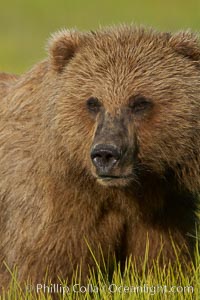
Portrait of a young brown bear, pausing while grazing in tall sedge grass. Brown bears can consume 30 lbs of sedge grass daily, waiting weeks until spawning salmon fill the rivers.
Species: Brown bear, Ursus arctos
Location: Lake Clark National Park, Alaska
Image ID: 19135
Species: Brown bear, Ursus arctos
Location: Lake Clark National Park, Alaska
Image ID: 19135
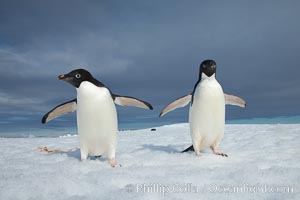
Two Adelie penguins, holding their wings out, standing on an iceberg.
Species: Adelie penguin, Pygoscelis adeliae
Location: Paulet Island, Antarctic Peninsula, Antarctica
Image ID: 25007
Species: Adelie penguin, Pygoscelis adeliae
Location: Paulet Island, Antarctic Peninsula, Antarctica
Image ID: 25007
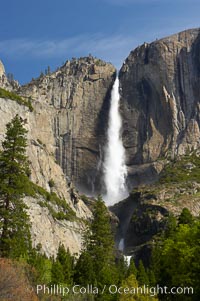
Yosemite Falls at peak flow in late spring, viewed from Cooks Meadow.
Location: Yosemite Falls, Yosemite National Park, California
Image ID: 12631
Location: Yosemite Falls, Yosemite National Park, California
Image ID: 12631
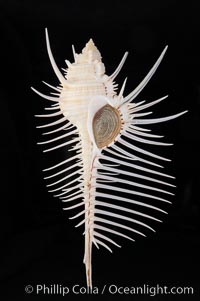
Venus comb murex. Scientists speculate that the distinctively long and narrow spines are a protection against fish and other mollusks and prevent the mollusk from sinking into the soft, sandy mud where it is commonly found.
Species: Venus comb murex, Murex pecten
Image ID: 12970
Species: Venus comb murex, Murex pecten
Image ID: 12970
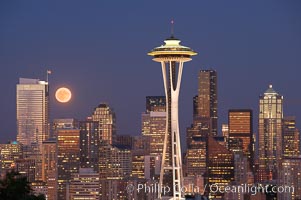
Full moon rises over Seattle city skyline at dusk, Space Needle at right.
Location: Seattle, Washington
Image ID: 13661
Location: Seattle, Washington
Image ID: 13661
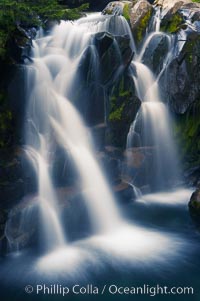
Paradise Falls tumble over rocks in Paradise Creek.
Location: Paradise Creek, Mount Rainier National Park, Washington
Image ID: 13867
Location: Paradise Creek, Mount Rainier National Park, Washington
Image ID: 13867
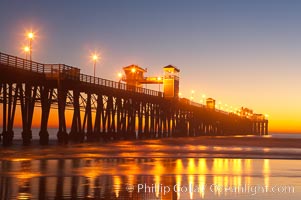
Oceanside Pier at dusk, sunset, night. Oceanside.
Location: Oceanside Pier, California
Image ID: 14628
Location: Oceanside Pier, California
Image ID: 14628
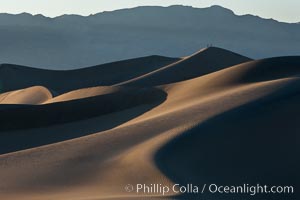
Tiny hikers atop Sand Dunes in Death Valley National Park, California. Near Stovepipe Wells lies a region of sand dunes, some of them hundreds of feet tall.
Location: Stovepipe Wells, Death Valley National Park, California
Image ID: 15577
Location: Stovepipe Wells, Death Valley National Park, California
Image ID: 15577
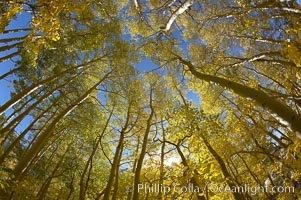
Aspen trees display Eastern Sierra fall colors, Lake Sabrina, Bishop Creek Canyon.
Species: Aspen, Populus tremuloides
Location: Bishop Creek Canyon, Sierra Nevada Mountains, California
Image ID: 17547
Species: Aspen, Populus tremuloides
Location: Bishop Creek Canyon, Sierra Nevada Mountains, California
Image ID: 17547
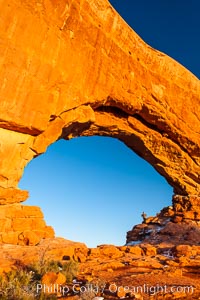
Hiker in North Window, sunset, western face. North Window is a natural sandstone arch 90 feet wide and 48 feet high.
Location: North Window, Arches National Park, Utah
Image ID: 18159
Location: North Window, Arches National Park, Utah
Image ID: 18159
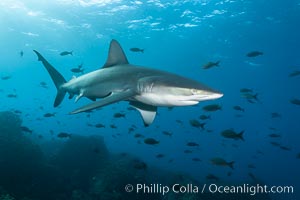
Galapagos shark swims over a reef in the Galapagos Islands, with schooling fish in the distance.
Species: Galapagos shark, Carcharhinus galapagensis
Location: Wolf Island, Galapagos Islands, Ecuador
Image ID: 16240
Species: Galapagos shark, Carcharhinus galapagensis
Location: Wolf Island, Galapagos Islands, Ecuador
Image ID: 16240
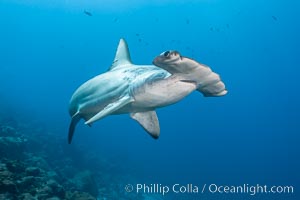
Scalloped hammerhead shark swims over a reef in the Galapagos Islands. The hammerheads eyes and other sensor organs are placed far apart on its wide head to give the shark greater ability to sense the location of prey.
Species: Scalloped hammerhead shark, Sphyrna lewini
Location: Wolf Island, Galapagos Islands, Ecuador
Image ID: 16246
Species: Scalloped hammerhead shark, Sphyrna lewini
Location: Wolf Island, Galapagos Islands, Ecuador
Image ID: 16246
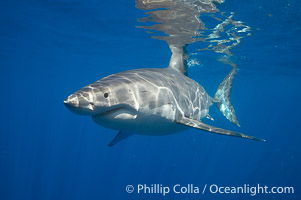
A great white shark swims through the clear waters of Isla Guadalupe, far offshore of the Pacific Coast of Mexico's Baja California. Guadalupe Island is host to a concentration of large great white sharks, which visit the island to feed on pinnipeds and use it as a staging area before journeying farther into the Pacific ocean.
Species: Great white shark, Carcharodon carcharias
Location: Guadalupe Island (Isla Guadalupe), Baja California, Mexico
Image ID: 19465
Species: Great white shark, Carcharodon carcharias
Location: Guadalupe Island (Isla Guadalupe), Baja California, Mexico
Image ID: 19465
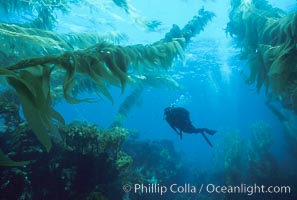
A SCUBA diver swims through a giant kelp forest which is tilted back by strong ocean currents. Giant kelp, the fastest plant on Earth, reaches from the rocky bottom to the ocean's surface like a submarine forest.
Species: Giant kelp, Macrocystis pyrifera
Location: San Clemente Island, California
Image ID: 01107
Species: Giant kelp, Macrocystis pyrifera
Location: San Clemente Island, California
Image ID: 01107
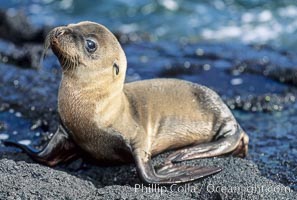
Galapagos sea lion pup, Punta Espinosa.
Species: Galapagos sea lion, Zalophus californianus wollebacki, Zalophus californianus wollebaeki
Location: Fernandina Island, Galapagos Islands, Ecuador
Image ID: 01611
Species: Galapagos sea lion, Zalophus californianus wollebacki, Zalophus californianus wollebaeki
Location: Fernandina Island, Galapagos Islands, Ecuador
Image ID: 01611
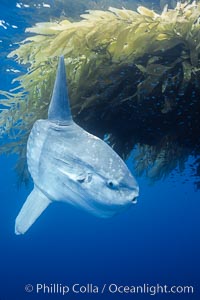
Ocean sunfish recruiting fish near drift kelp to clean parasites, open ocean, Baja California.
Species: Ocean sunfish, Mola mola
Image ID: 03267
Species: Ocean sunfish, Mola mola
Image ID: 03267
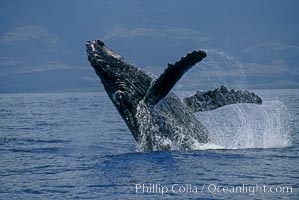
Humpback whale breaching with pectoral fins lifting spray from the ocean surface.
Species: Humpback whale, Megaptera novaeangliae
Location: Maui, Hawaii
Image ID: 03854
Species: Humpback whale, Megaptera novaeangliae
Location: Maui, Hawaii
Image ID: 03854
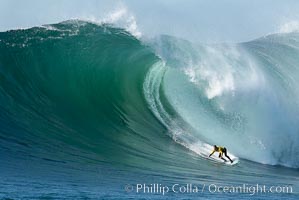
2006 Mavericks surf contest champion Grant Twiggy Baker of South Africa. Final round, Mavericks surf contest, February 7, 2006.
Location: Mavericks, Half Moon Bay, California
Image ID: 15299
Location: Mavericks, Half Moon Bay, California
Image ID: 15299

Atlantic spotted dolphin and Olympic champion swimmer Matt Biondi.
Species: Atlantic spotted dolphin, Stenella frontalis
Location: Bahamas
Image ID: 00018
Species: Atlantic spotted dolphin, Stenella frontalis
Location: Bahamas
Image ID: 00018
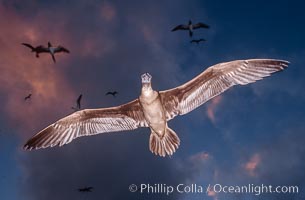
Brown booby flying over Rose Atoll at sunset, with dark colorful storm clouds and other birds in the background.
Species: Brown booby, Sula leucogaster
Location: Rose Atoll National Wildlife Sanctuary, American Samoa
Image ID: 00914
Species: Brown booby, Sula leucogaster
Location: Rose Atoll National Wildlife Sanctuary, American Samoa
Image ID: 00914
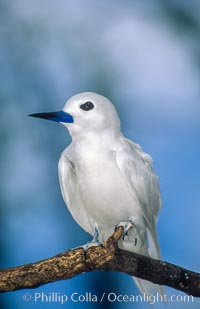
A white tern, or fairy tern, alights on a branch at Rose Atoll in American Samoa.
Species: Fairy tern, Gygis alba
Location: Rose Atoll National Wildlife Sanctuary, American Samoa
Image ID: 00871
Species: Fairy tern, Gygis alba
Location: Rose Atoll National Wildlife Sanctuary, American Samoa
Image ID: 00871
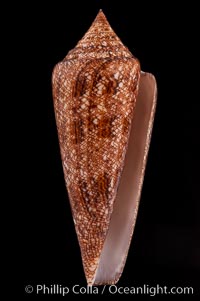
Glory of the Sea cone shell, brown form. The Glory of the Sea cone shell, once one of the rarest and most sought after of all seashells, remains the most famous and one of the most desireable shells for modern collectors.
Species: Glory of the seas cone, Conus gloriamaris
Image ID: 08732
Species: Glory of the seas cone, Conus gloriamaris
Image ID: 08732
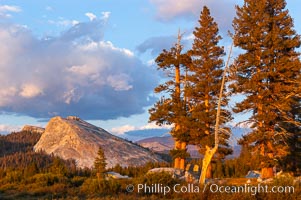
Lembert Dome and late afternoon clouds rise above Tuolumne Meadows in the High Sierra, catching the fading light of sunset.
Location: Tuolumne Meadows, Yosemite National Park, California
Image ID: 09938
Location: Tuolumne Meadows, Yosemite National Park, California
Image ID: 09938
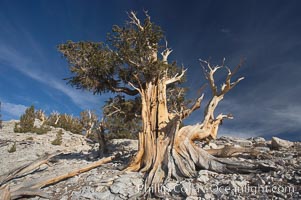
Bristlecone pine displays its characteristic gnarled, twisted form as it rises above the arid, dolomite-rich slopes of the White Mountains at 11000-foot elevation. Patriarch Grove, Ancient Bristlecone Pine Forest.
Species: Bristlecone Pine, Pinus longaeva
Location: White Mountains, Inyo National Forest, California
Image ID: 17475
Species: Bristlecone Pine, Pinus longaeva
Location: White Mountains, Inyo National Forest, California
Image ID: 17475
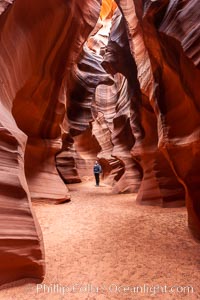
A hiker admiring the striated walls and dramatic light within Antelope Canyon, a deep narrow slot canyon formed by water and wind erosion.
Location: Navajo Tribal Lands, Page, Arizona
Image ID: 17993
Location: Navajo Tribal Lands, Page, Arizona
Image ID: 17993
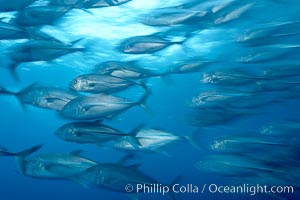
Bigeye trevally jacks, motion blur, schooling.
Species: Bigeye jack, Caranx sexfasciatus
Location: Darwin Island, Galapagos Islands, Ecuador
Image ID: 16347
Species: Bigeye jack, Caranx sexfasciatus
Location: Darwin Island, Galapagos Islands, Ecuador
Image ID: 16347
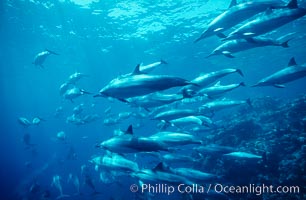
Hawaiian spinner dolphin, resting herd swimming along reef.
Species: Hawaiian spinner dolphin, Stenella longirostris
Location: Lanai, Hawaii
Image ID: 00108
Species: Hawaiian spinner dolphin, Stenella longirostris
Location: Lanai, Hawaii
Image ID: 00108
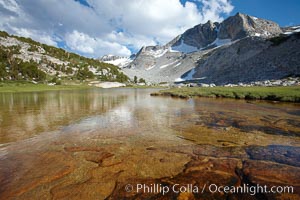
Townsley Lake (10396'), a beautiful alpine lake sitting below blue sky, clouds and Fletcher Peak (right), lies amid the Cathedral Range of glacier-sculpted granite peaks in Yosemite's high country, near Vogelsang High Sierra Camp.
Location: Yosemite National Park, California
Image ID: 23206
Location: Yosemite National Park, California
Image ID: 23206
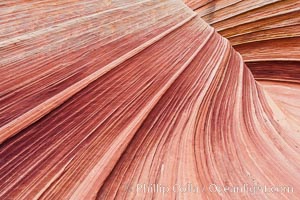
The Wave, an area of fantastic eroded sandstone featuring beautiful swirls, wild colors, countless striations, and bizarre shapes set amidst the dramatic surrounding North Coyote Buttes of Arizona and Utah. The sandstone formations of the North Coyote Buttes, including the Wave, date from the Jurassic period. Managed by the Bureau of Land Management, the Wave is located in the Paria Canyon-Vermilion Cliffs Wilderness and is accessible on foot by permit only.
Location: North Coyote Buttes, Paria Canyon-Vermilion Cliffs Wilderness, Arizona
Image ID: 20607
Location: North Coyote Buttes, Paria Canyon-Vermilion Cliffs Wilderness, Arizona
Image ID: 20607